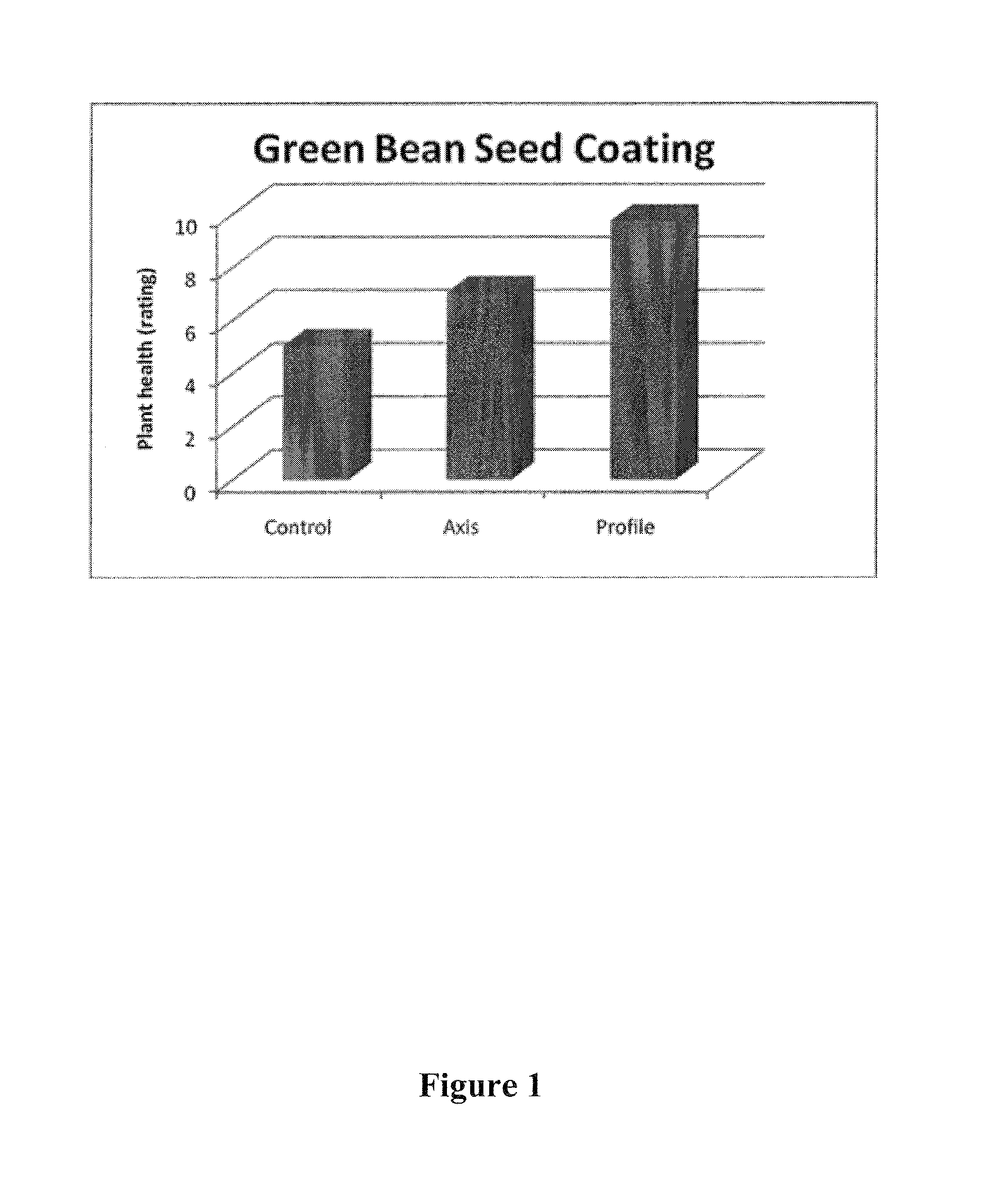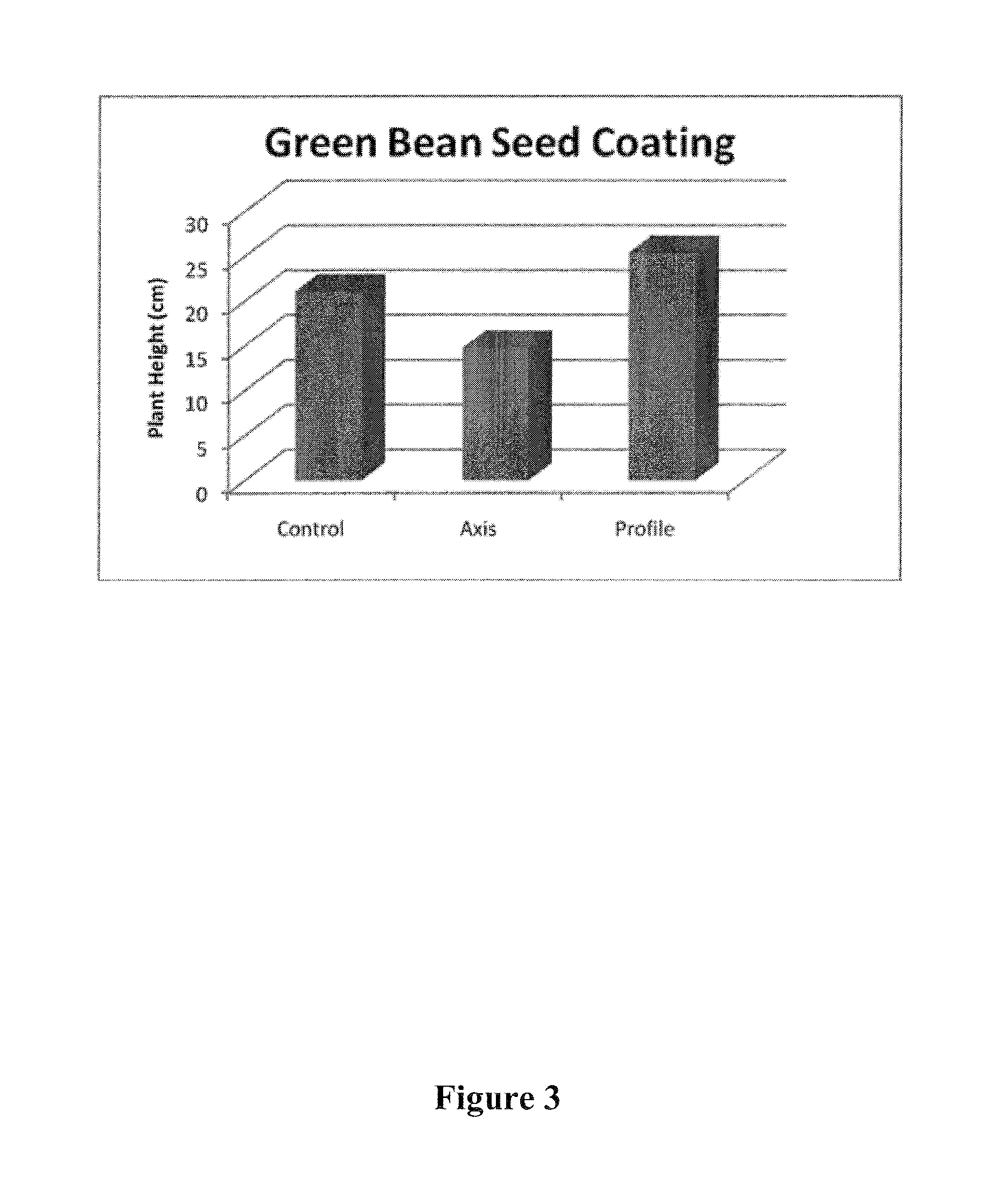Materials and methods for controlling nematodes with Pasteuria spores in seed coatings
a technology of pasteuria spores and seed coatings, which is applied in the field of materials and methods for controlling nematodes with pasteuria spores in seed coatings, can solve the problems of phytopathogenic nematodes being particularly difficult to control, preventing this damage, and insufficient time to develop and register new synthetic compounds for nematode control
- Summary
- Abstract
- Description
- Claims
- Application Information
AI Technical Summary
Benefits of technology
Problems solved by technology
Method used
Image
Examples
example 1
Preparation of Pasteuria Seed Coating
[0073]This Example illustrates methods for coating seeds with Pasteuria penetrans spores. Pasteuria spores are suspended in 10 mmol / L phosphate buffer and adjusted to about 2×107 spores / ml. A Pasteuria-granular mixture is obtained by mixing 5 ml of the spore suspension with 2 g AXIS® diatomaceous earth granules in a petri dish; or alternatively, by mixing 3 ml spore suspension with 2 g PROFILE® greens grade clay granules in a petri dish.
[0074]The mixture is dried under a lamp. Then, green bean seeds are treated with polyvinyl acetate and allowed to dry for 5 minutes in a flat dish. The seeds are thoroughly coated with the Pasteuria-granular mixture.
[0075]The Pasteuria coated seeds are suitable for immediate use or long term storage.
example 2
Efficacy of Pasteuria-Coating of Seeds for Nematode Control
[0076]To evaluate the effect of Pasteuria-coated seeds on nematodes, a greenhouse pot test is performed.
[0077]2.2 g each of Axis turf supplement and Profile turf supplement were placed in separate petri dishes. Pasteuria penetrans spores at a concentration of 1.8×107 sp / ml were pipetted into each dish until the materials were saturated. The Axis supplement was saturated at 5 mL and the Profile was saturated at 4 mL. The dishes were set under a halogen lamp to dry. Green bean seeds (Ferry-Morse Blue Lake 274) were weighed and determined to have an average weight of 413.3 mg. Seeds were coated with a polyvinyl acetate sticker by pouring Elmer's Clear School Glue into a beaker and manually dunking individual seeds with tweezers into the glue. Seeds were dried for 5 minutes in a petri dish, then rolled in the spore-treated Axis and Profile granules until thoroughly coated. Control seeds were coated as above with untreated Axis a...
PUM
 Login to View More
Login to View More Abstract
Description
Claims
Application Information
 Login to View More
Login to View More - R&D
- Intellectual Property
- Life Sciences
- Materials
- Tech Scout
- Unparalleled Data Quality
- Higher Quality Content
- 60% Fewer Hallucinations
Browse by: Latest US Patents, China's latest patents, Technical Efficacy Thesaurus, Application Domain, Technology Topic, Popular Technical Reports.
© 2025 PatSnap. All rights reserved.Legal|Privacy policy|Modern Slavery Act Transparency Statement|Sitemap|About US| Contact US: help@patsnap.com



